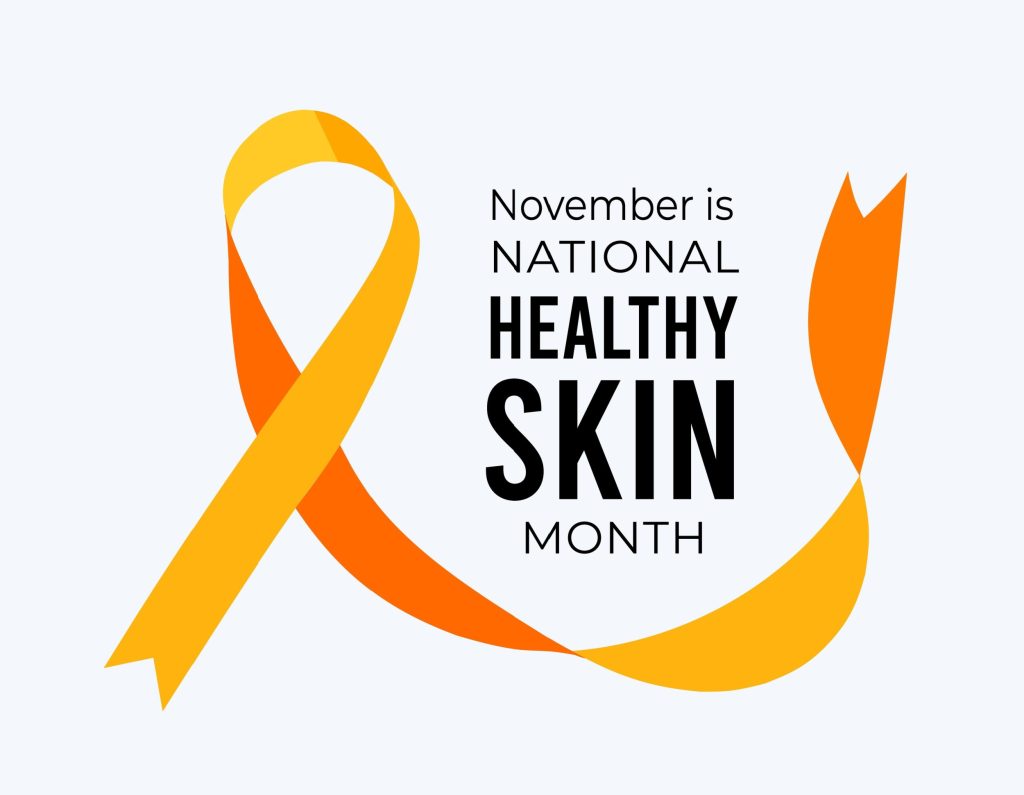
Throughout your life, you may experience a number of skin changes. Facial redness can stem from many causes – some fluctuations are completely normal and happen due to changes in weather, hormones, or age. However, some concerns such as red or blotchy skin could be caused due to allergic reactions, skin irritation, sun damage, or certain sensitivities. In many cases, facial redness can be a sign of an underlying skin condition.
If you deal with redness or blotchiness on your face or body, keep reading to learn more about what your skin may be telling you and how to move forward with a proper treatment plan.
Reasons for Your Redness
Using too many products
If your skin is red and flaky, it may just be because you are using too many different products at once. Using a multitude of products that all target sensitive skin can actually cause further irritation. Additionally, products that aim to exfoliate and have high pH levels can be abrasive on your skin, especially if you have certain sensitivities. The best way to combat this is by speaking with your dermatologist about your skin type and asking for a recommendation for mild, gentle, and effective skin care products.
Rosacea
Rosacea is a common skin condition that is difficult to detect because early signs mimic common blushing, flushing, or acne breakouts. Rosacea causes redness, red pimples, and red vascular lines over the center areas of the face (cheeks, chin, forehead). It can also cause the nose to become red and bulbous. While rosacea comes and goes in flare ups, facial redness may linger longer or not go away at all as the condition progresses. Paying a visit to your dermatologist can be extremely beneficial in finding the right treatment to reduce redness and irritation.
Seborrheic dermatitis
Seborrheic dermatitis presents as a red, flaky rash on oily areas of the body, including the face (especially around the nose and forehead). Seborrheic dermatitis typically requires treatment to manage its symptoms. These include dandruff shampoo, barrier-repair cream, or topical medication. It’s best to talk to your dermatologist if you suspect you have this skin condition.
Eczema
Eczema is characterized by dry, red patches of skin that are itchy and inflamed. Eczema can appear anywhere on the body, including the face. It’s commonly found in children, but many adults develop eczema as well. There are seven different types of eczema – the most common type is atopic dermatitis. Although there is no cure for eczema, you can manage its symptoms with proper treatment from a dermatologist.
Contact dermatitis
Contact with an irritant or allergen can cause a red rash to appear over the area of skin the irritant touches. Common triggers for contact dermatitis include poison oak, poison ivy, harsh chemicals in detergent or cleaning products, perfumes, soaps and lotions, cosmetic products, and essential oils. Once you stop using the product that is causing irritation, the redness and irritation should go away. However, it can be challenging to find the root cause since so many everyday environmental factors can be to blame. A board-certified dermatologist can help you determine the cause and assist you in finding the right care plan.
Acne
Acne is the most common skin condition in the U.S. It typically presents during teenage puberty, when hormonal changes cause the body’s oil glands to produce more oil. Excess oil traps bacteria and dirt into the skin’s pores and leads to the development of painful, swollen bumps, blackheads, and whiteheads. The skin surrounding acne may look red and inflamed. Although acne is most common among teenagers, many adults suffer from acne as well. Treatment for acne can vary, so it’s best to speak with a board-certified dermatologist to receive a customized skin care regimen.
Sun damage
Exposure to the sun’s harmful UV rays can cause a red, inflamed, tender burn to develop – a sunburn. Sunburn can affect any area of the body exposed to the sun, including the face. After effects of a sunburn include blotchy skin, hyperpigmentation, peeling, and scarring. The best way to prevent sunburn is by applying a broad-spectrum, water-resistant sunscreen; covering as much skin as possible with breathable long-sleeved, lightweight shirts and long pants with built-in UPF protection; seeking shade, especially during the hours of 10 a.m. and 4 p.m.; and avoiding tanning beds. FLDSCC, along with The American Academy of Dermatology recommends conducting annual skin exams to look for the ABCDE’s of skin cancer.
Dryness
Skin dryness and dehydration weakens the skin barrier and increases skin sensitivity, irritation, and redness. Over-exfoliation, cold weather, and not moisturizing can all contribute to dry, red skin. Dry skin is traditionally not a serious health issue; however, it can produce several complications. FLDSCC recommends you schedule an exam with a licensed dermatology professional if you experience frequent dry skin to rule out risks for bacterial infections, allergies, atopic dermatitis, or other skin conditions that may be self-misdiagnosed.
Reaction to medication
Both topical and oral medications can cause changes to the skin. Medications such as benzoyl peroxide, salicylic acid, and retinoids can all be triggers for redness, dryness, and irritation. Oral prescription medications such as corticosteroids can also cause breakouts. Usually, once these medications are stopped, redness subsides. However, some medications that cause blotchiness cannot be stopped, and in this case, it’s best to speak with your dermatologist to develop a plan to clear your skin.
Diet & exercise routine
What you eat, and drink can have an impact on the appearance of your skin. Blotchiness can come from eating certain things such as spicy or acidic foods and drinking coffee and alcohol. Additionally, if you exercise and sweat regularly and don’t wash your face afterwards or remove wet clothing, you can develop redness and blotchiness. Also, if you exercise outdoors and do not use sun protection, you will be more prone to getting a sunburn, and also developing irritated, red, and blotchy skin. If you notice a breakout after eating, consider making dietary swaps to see if it makes a difference. If you suspect exercising is the culprit, try to remember to shower and change into dry clothes immediately after working out. Also, wear an SPF that is sweat-resistant if you are going to be outdoors.
Without a dermatological exam it may be difficult for you to determine the source of redness, warmth, and inflammation across your face. This is why it’s important to keep track of how long you have been experiencing symptoms and report those to your dermatologist during a skin exam for further direction next steps and treatment.
FLDSCC Can Treat Facial Redness Causes by a Skin Condition
The board-certified dermatologists at Florida Dermatology and Skin Cancer Centers are experts in the field of hair, nails, and skin. If you have unexplained facial redness, our medical professionals can make an accurate diagnosis of your condition and get you started on a treatment plan that meets your individual needs. Contact us today to schedule a consultation at the clinic nearest you. For more information about services that Florida Dermatology and Skin Cancer Centers provides, or to make an appointment for a skin exam, visit www.fldscc.com or contact us at (855) FLD-SKIN.


